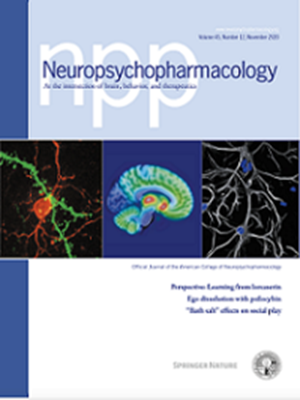Inflammatory pain in mice induces light cycle-dependent effects on sleep architecture
IF 6.6
1区 医学
Q1 NEUROSCIENCES
引用次数: 0
Abstract
Pain syndromes include physical, sensory, emotional, and cognitive symptoms such as disability, negative affect, feelings of stress, and fatigue. Experimental induction of long-term inflammatory pain in rodents by hindpaw injection of complete Freund’s adjuvant (CFA) produces anhedonia and dysregulated naturalistic behaviors, similar to the effects of unregulated stress. We examined whether these similarities extend to changes in sleep and rhythms, such as those induced by chronic social defeat stress, using actigraphy and wireless EEG in mice. Comparisons were made between groups that received injections at the onset of the light or dark phase. We found that CFA-induced inflammatory pain alters sleep architecture in both sexes; most notably, it increased sleep duration in the dark phase—when mice are normally more likely to be awake—while also increasing sleep bout length and reducing wake bout length. In contrast, during the light phase, it decreased sleep bout length, indicating fragmentation. Similarly, CFA-induced increases in REM and SWS duration and bouts were largest during the dark phase. Dark-phase effects were remarkably consistent regardless of whether the mice had been injected at darkness onset or 12 h earlier, whereas light-phase effects were more dependent on time since injection. Injections also produced non-specific alterations in circadian rhythmicity. Our findings indicate that inflammatory pain prominently increases sleep during normally active phases as well as transitions between sleep and wakefulness throughout the day. These effects align with clinical observations and establish a basis for mechanistic studies and use of these procedures to better predict outcomes in humans.

小鼠炎症性疼痛诱导光周期依赖性睡眠结构效应。
疼痛综合征包括身体、感觉、情绪和认知症状,如残疾、负面影响、压力感和疲劳。通过后爪注射完全弗氏佐剂(CFA)实验性诱导啮齿动物长期炎症性疼痛,产生快感缺乏和失调的自然行为,类似于不调节应激的影响。我们在小鼠身上使用活动描记仪和无线脑电图检查了这些相似性是否延伸到睡眠和节律的变化,例如由慢性社会失败压力引起的变化。在亮期或暗期开始时接受注射的组之间进行比较。我们发现cfa诱导的炎症性疼痛改变了两性的睡眠结构;最值得注意的是,它增加了黑暗阶段的睡眠时间——此时老鼠通常更有可能是清醒的——同时也增加了睡眠时间,减少了清醒时间。相反,在光期,它减少了睡眠回合的长度,表明碎片化。同样,cfa诱导的REM和SWS持续时间和发作次数的增加在暗期最大。无论小鼠是在黑暗开始还是早12小时注射,暗相效应都是显著一致的,而光相效应更多地依赖于注射后的时间。注射也产生了昼夜节律的非特异性改变。我们的研究结果表明,炎症性疼痛显著地增加了正常活动阶段的睡眠,以及一天中睡眠和清醒之间的过渡。这些效应与临床观察结果一致,并为机械研究和使用这些程序更好地预测人类结果奠定了基础。
本文章由计算机程序翻译,如有差异,请以英文原文为准。
求助全文
约1分钟内获得全文
求助全文
来源期刊

Neuropsychopharmacology
医学-精神病学
CiteScore
15.00
自引率
2.60%
发文量
240
审稿时长
2 months
期刊介绍:
Neuropsychopharmacology is a reputable international scientific journal that serves as the official publication of the American College of Neuropsychopharmacology (ACNP). The journal's primary focus is on research that enhances our knowledge of the brain and behavior, with a particular emphasis on the molecular, cellular, physiological, and psychological aspects of substances that affect the central nervous system (CNS). It also aims to identify new molecular targets for the development of future drugs.
The journal prioritizes original research reports, but it also welcomes mini-reviews and perspectives, which are often solicited by the editorial office. These types of articles provide valuable insights and syntheses of current research trends and future directions in the field of neuroscience and pharmacology.
 求助内容:
求助内容: 应助结果提醒方式:
应助结果提醒方式:


